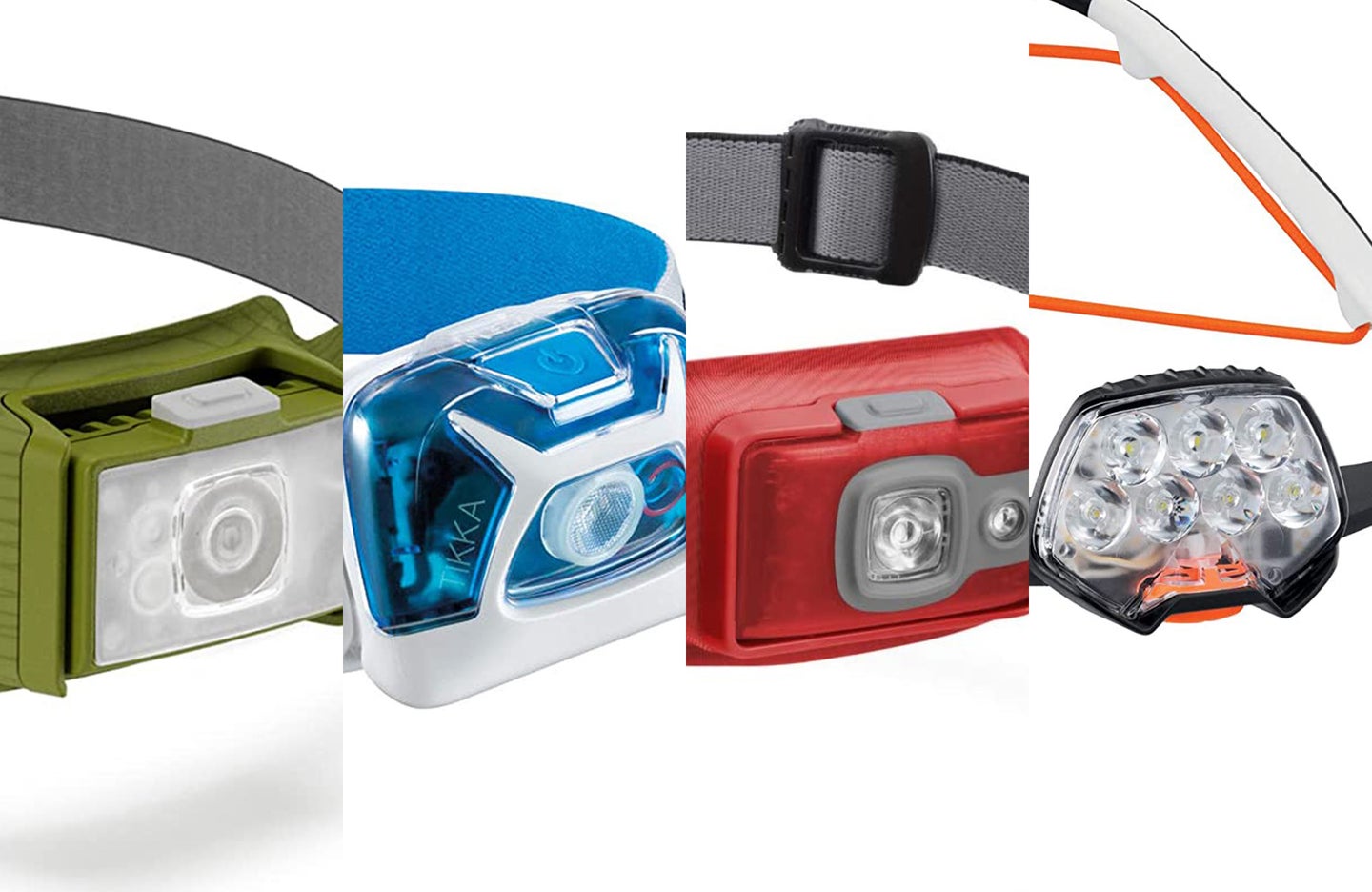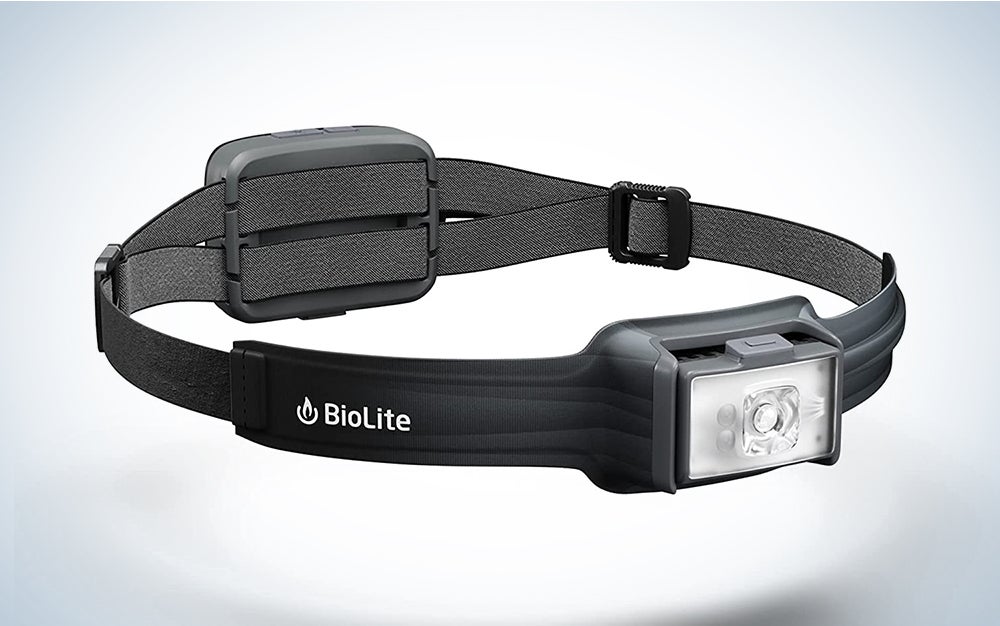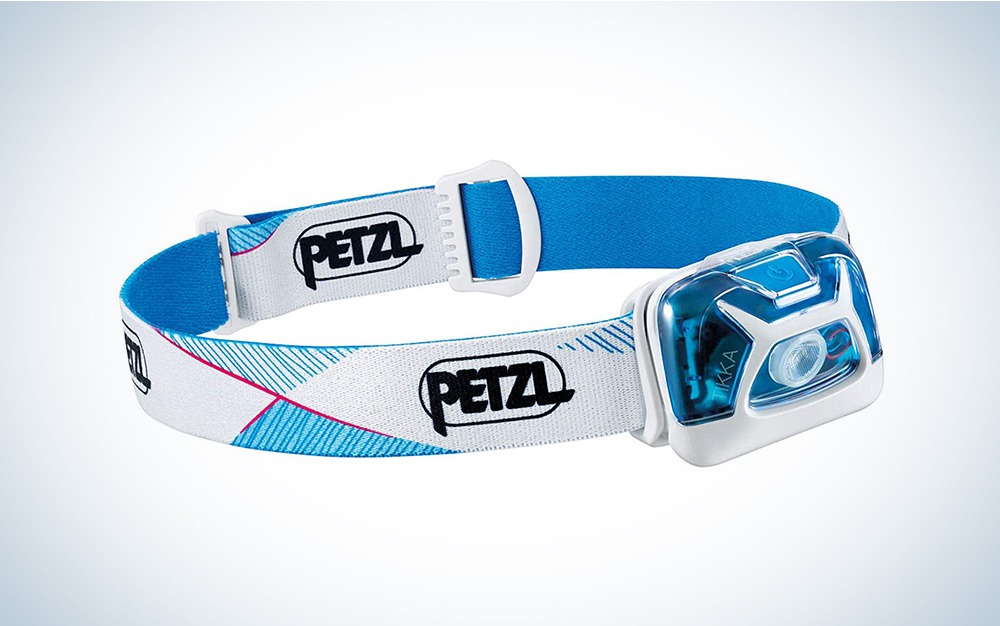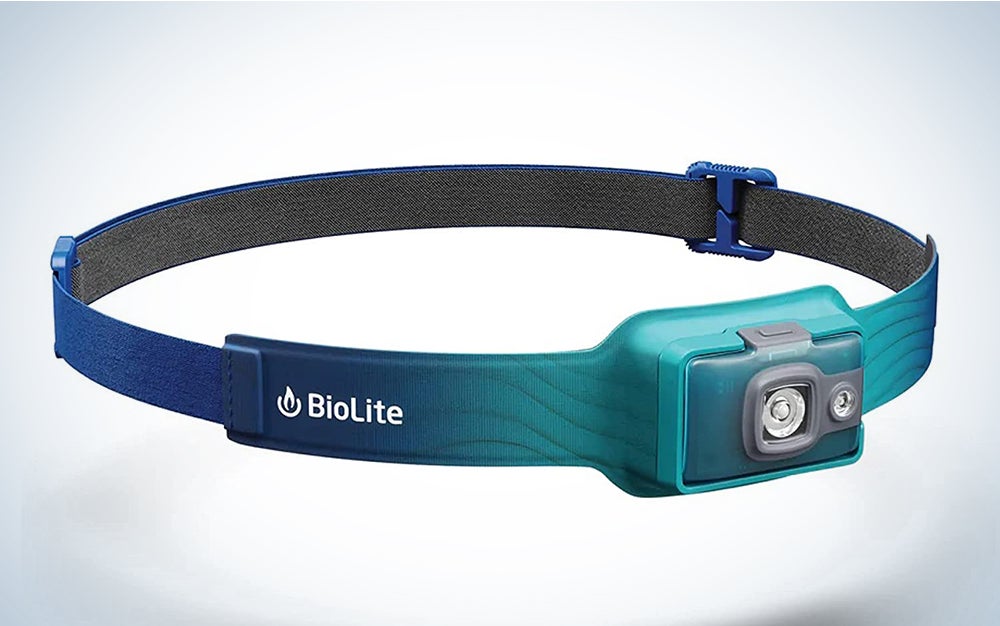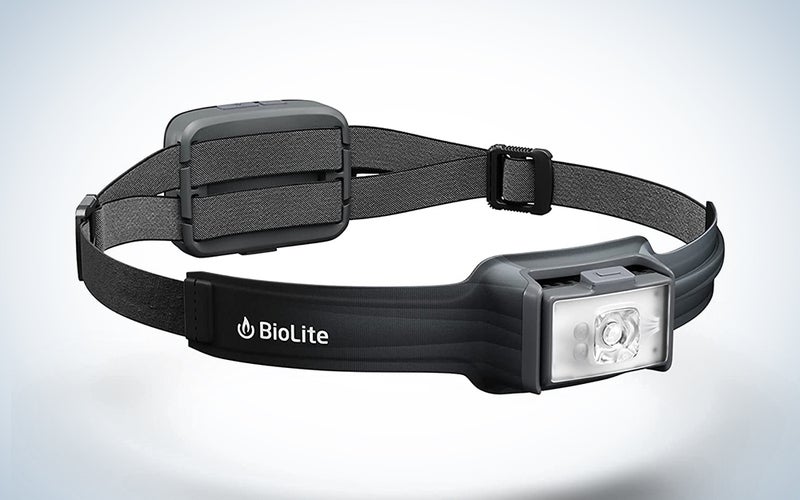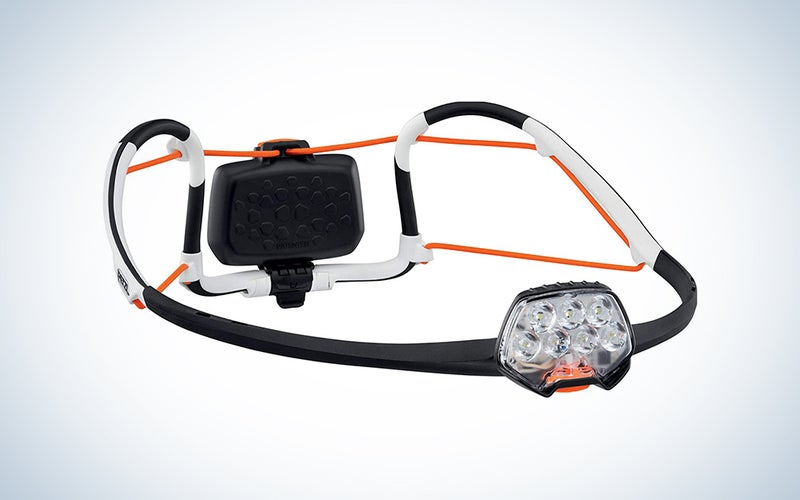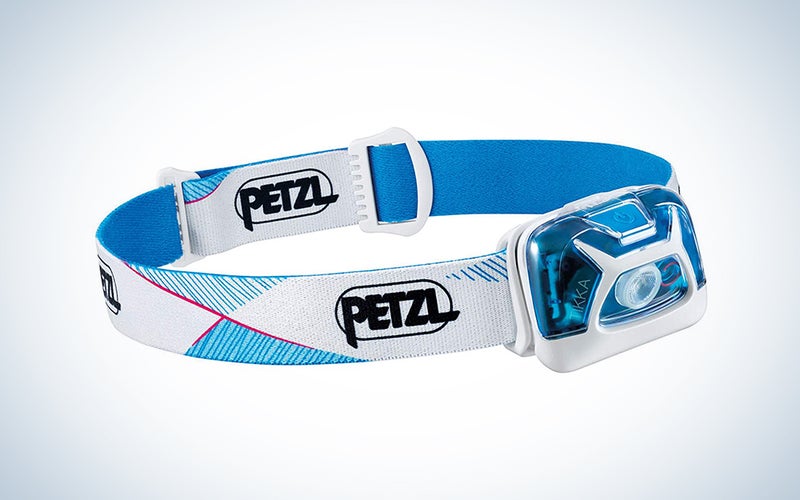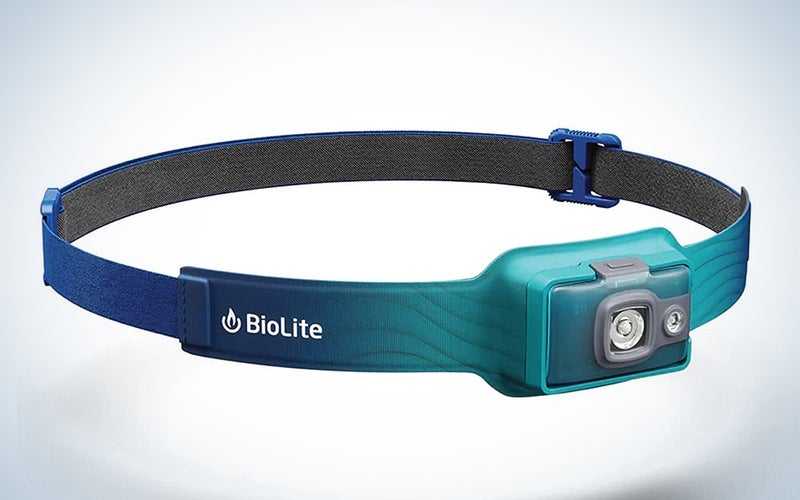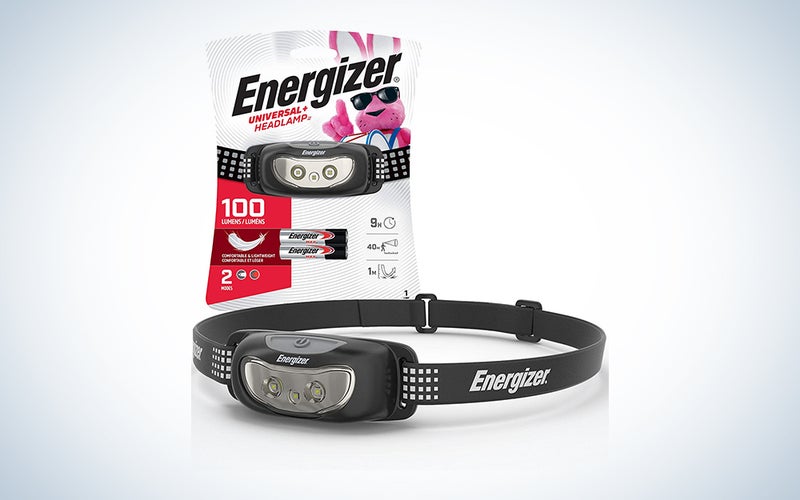We may earn revenue from the products available on this page and participate in affiliate programs. Learn more ›
When you need to work in the dark, a Bic lighter won’t cut it, and your smartphone can’t hover in place hands-free (yet)—making it the perfect time to consider a headlamp. You need a high-quality, dependable source of bright light, and headlamps give you all the luminescence you need while freeing up your hands and keeping you company in the dark, dark night. They should also be comfortable. An LED variety is perfect for running, hiking, and camping, but these headband powerhouses can do much more than shine a light on a trail. Use a headlamp for working around the house, doing DIY projects, finding the circuit breaker in the basement, or anything else that requires a helpful beam of light. With so many options on the market, how do you separate the good headlamps from the glorified sweatbands? Know what to look for in the best headlamps and finally see what you’ve missed.
- Best overall: BioLite 800
- Best lightweight: PETZL, IKO CORE Rechargeable LED Headlamp
- Best multipurpose: PETZL, Tikka Outdoor Headlamp
- Best for running: BioLite 325
- Best budget: Energizer LED Headlamp
How we chose the best headlamps
We looked at reviews, gathered recommendations, performed heavy research, and conducted heavy user testing to find the best headlamps. We wouldn’t want to leave you in the dark—literally and metaphorically—when you make your important headlamp considerations.
The best headlamps: Reviews & Recommendations
Headlamps are not as complex as their product descriptions imply, but that doesn’t mean they’re all simple and the same. From nighttime treasure hunting to walking to the camping cooler to grab a drink when the fire is out, we’ve brought to light options offering all levels of lumens (abbreviated lm) to help you find the brightest buy for you.
Best overall: BioLite 800
BioLite
Specs
- Lumens: 800 lumens
- Battery life: 7 hours on high; 150 on low
- Rechargeable?: Yes
- Waterproof rating: IPX4
Pros
- Bright
- Comfortable
- Lots of light modes
Cons
- Band prone to stretching
This rechargeable headlamp boasts an impressive 800lm on its highest setting. For climbers and spelunkers, it’s a stellar example of too much being just enough. The Run Forever pass-through charging system lets users swap out battery packs without losing the light. And unlike other LED headlamps that blast past the 500lm mark, the BioLite allows you to use max brightness in constant mode instead of a short burst. At full power, the light lasts about seven hours. On the lowest setting, you get more than six full days of light. Expect all the standard features, such as eight different light modes and dimmable options; it’s also surprisingly comfortable. It’s a great hunting headlamp, camping headlamp, and hiking headlamp—though it can be a bit much for your nightly dog walking.
Best lightweight: PETZL, IKO CORE Rechargeable LED Headlamp
Petzl
Specs
- Lumens: 500 lumens
- Battery life: 10 hours on medium
- Rechargeable?: Yes, also compatible with 3 AAA batteries
- Waterproof rating: IPX4
Pros
- Waterproof
- Recharge time is fast
- Wide range of light settings
Cons
- Throws glare if you wear glasses
While there are lighter options with bands that look like a shoelace, this headlamp has a bit more rigidity and durability. The stretchable band of the IKO Core from PETZL is comfortable and won’t get saturated with sweat. Wipe it clean after a workout or hike, and it’ll be fresh and ready for your next mission. The 500lm on the brightest setting can be a helpful burst of light when needed, but even on the lowest 6lm setting, you have enough light for a midnight stroll. Recharge time via micro USB is about three hours, and you can also use standard AAA batteries (though we recommend rechargeables). On the medium setting of 100lm, expect about 10 hours of burn time. This piece of outdoor gear can also be worn around your neck, giving you more lighting options. The slim solution is perfect for outdoor exercising and adventure.
Best multipurpose: PETZL, Tikka Outdoor Headlamp
Petzl
Specs
- Lumens: 300 lumens
- Battery life: 120 hours on lowest setting
- Rechargeable?: Yes, also compatible with 3 AAA batteries
- Waterproof rating: IPX4
Pros
- Shock and vibration resistant
- “Just right” amount of light
- Comfortable
Cons
- Short battery life on max
The PETZL Tikka headlamp is the Goldilocks of LED headlamps: Not too bright, not too dim … just right. Its maximum 300lm flood light brightens up any outdoor activity, and on its two lower settings (100lm and 6lm), it’s a great light source for indoor projects and group activities. The brightly colored reflective band makes it easy to spot in a closet or backpack, eliminating frustration in the dark. You can use the PETZL rechargeable battery (sold separately) or three AAA batteries. Battery life on the lowest setting is about 120 hours and two hours on max brightness. The Tikka is the best standard, no-nonsense headlamp for everyday indoor and outdoor use.
Best for running: BioLite 325
BioLite
Specs
- Lumens: 325 lumens
- Battery life: 40 hours on low; three hours on high
- Rechargeable?: Yes
- Waterproof rating: IPX4
Pros
- Waterproof
- Lightweight
- Can handle perspiration
Cons
- micro USB port location slightly obstructed by rubber cover
The 325lm of the BioLite 325 may sound puny compared to the higher-lumen models on the list. But this was built for running, not signaling aliens. It provides exactly what runners need, so you’re not buying lumens you’ll never use. Most important, the BioLite feels great. The smooth headband doesn’t dig into your skin but stays in place. The 40 hours of burn time on the lowest setting is more than long enough for even long-distance runs. And the batteries are quickly and easily recharged with a micro USB port. For anyone looking for a nightly running partner, the BioLite is a helpful companion.
Best budget: Energizer LED Headlamp
Amazon
Specs
- Lumens: 100 lumens
- Battery life: 9 hours
- Rechargeable?: No, compatible with 2 AA batteries
- Waterproof rating:
Pros
- 40 meters of beam length
- Red setting for night vision
- Compact
Cons
- Headlamp fixed in one position
The Energizer LED Headlamp shines brightly enough with 100lm of light from two AA batteries. The downside is the lack of pivot. Unlike most models that can be aimed up or down, this headlamp is fixed in one position. If you want light shining in front of your feet, you’ll need to look down. It’s not ideal for runners but is great camping gear and kid-friendly. Keep one in your car for emergencies. Even if you use it to change a tire once, it will have paid for itself—ask anyone who has tried to use a smartphone flashlight with one hand and a tool with the other.
What to consider when buying the best headlamps
The basics of all LED headlamps are lumens and run time: How bright is the lamp, and how long will it last? Answering those questions will help narrow down your options.
Light is measured in lumens (abbreviated lm). The higher the lumen number, the brighter the light. Forget trying to measure light by watts; this isn’t 1990. Wattage has little to do with energy-efficient LED headlamps and lights. Generally speaking, 200-500lm is more than enough for most outdoor activities. It may even be too much if you use the headlamp in a group and don’t want to blind your fellow campers. Remember that a book light that shines 50lm is ideal for reading in bed at night, so anything above 200lm may be overkill depending on use.
What’s also important is beam length and width. A flood light will coat the area in a diffuse layer of light. A focused spotlight beam creates a longer, brighter stream of light aimed at a specific area. Flood lights are great for camping and hanging out. Long-range spotlight beams of light are good for hiking, running, hunting, and other nightly activities. Many tactical headlamps feature zoom controls that create both wide and long beams.
Run time is the other key data point when choosing the best headlamp. You don’t want to be stranded in the middle of the woods when your light quits—that’s when all the cartoon animal eyes start popping up in the backgrounds—so keep an eye on the battery supply. If you’re going off the grid for a long period of time, ensure your light will last.
As for added features, what you need depends on how you plan to use the headlamp. Some lamps feature a red light, which won’t dilate your pupils and are great for working with others. Additional features may include strobing effects for emergencies and visibility, programmable light sensors for picking the perfect brightness, and dimmers for saving battery power when you don’t need Bat Signal–strength illumination.
Consider the following tips to find the most useful wearable nightlight on the market:
A powerful rechargeable headlamp can rival the sun
For some activities, all you need is a simple head flashlight. But for those who demand as much light as possible, feature-rich rechargeable headlamps offer over 750lm of light, the same luminosity as security floodlights.
Headlamps with brighter lights and more features cost more, so ensure that all the bells and whistles are useful for your needs. If you’re looking for a long-lasting model to make a dark forest look like a brightly lit grocery store, expect to pay $100 or more.
The brighter the light, the more power it will eat up and the quicker it will die. To get the brightest of the bright, it’s best to use the max output in short bursts to conserve battery power. Hit the high beams to get a better look at the trail or find the right grip on a rock wall, then click back to a lower brightness. Do not use the max brightness to scare your friends during a ghost story. The bright light of a focused 750lm spotlight can damage your eyes if you are not careful—ask a Gremlin.
Ultra-bright headlamps have many features, from light sensors that select the optimal light output to extra battery packs to keep artificial sun going throughout the night. Strobe effects designed to get people’s attention can be a real lifesaver. If you’re spending a hundred dollars on a rechargeable headlamp, it should also be weather-resistant and hardy enough to last beyond one backyard campout. This is an investment, not a toy.
The best hiking equipment should be dry and practically weightless
One downside of many headlamps is the thick fabric strap, which absorbs sweat and causes irritation. The last thing anyone wants when adventuring is a sopping-wet headband. You need lightweight hiking equipment; any added weight, even a few extra ounces, will affect your activity. Luckily, you can buy a thin headlamp dedicated to minimalism.
If you do, confirm that it’s made of quality material. Going small can mean the headlamp is easy to snap and crack. A well-made thin model should hold up against normal wear and tear and still be light as feather. For runners, walkers, hikers, and campers, these tiny headlamps feel airy and cool on a hot summer night.
Just because the headlamp lacks beefy battery packs and fist-sized bulbs doesn’t mean it’s not powerful. You can easily find a lightweight option that packs between 200-500lm of brightness. You may give up some adjustability and durability by going small, but for headlamps that shine bright for hours and hours, the little guys can go head(lamp) to head(lamp) against the larger models.
You may need an LED headlamp that does it all
Don’t get overwhelmed with options. There are handy, fully-loaded models that shine a light on any nighttime activity. While specialized tactical headlamps for hunting, fishing, and mountain climbing serve specific purposes, a basic LED headlamp is a jack of all trades. It will be one of the most useful resources in your family garage. Grab your trusty, universal headlamp during power outages, use it for car repairs, or even wear it when assigned to late-night grill duty.
The key to an all-in-one ever-ready headlamp is brightness variance. You may need 200lm to hike uphill safely, but only 5lm for wiring a model railroad layout. Your go-to wearable flashlight must be easy to use and shift from bright to dim as quickly as possible.
Most modern headlamps are designed for quick brightness selection with a single button. Buttons vary from model to model, but generally, one click selects max light; two is medium; three is low. When you need a light immediately, a basic design is more useful than a flashlight and easier to handle than fumbling with your smartphone.
What you don’t want in a family-friendly model are highly complicated, programmable dimming options that are great for specific activities but unnecessary for most household and backyard uses. Keep it simple, and keep it handy.
The best running headlamp won’t bounce
The bounce should be in your step, not your headlamp. The last thing a runner needs is to have their headlamp bounce down over their eyes and onto their necks. No matter how much you tighten the band, some so-called running headlamps will slip and come sliding down your head after a few strides. To alleviate the bounce problem, some runners tape up and modify their headbands and lamps. Instead, we suggest a running headlamp with bounce protection.
For running, you want a lightweight model with a strong supportive headband. You don’t want the headband to feel tight and cause headaches. Comfort and fit are more important than light output, but you will need enough lumens to show you the road ahead and alert drivers to your location.
Keeping all that in mind, you may be tempted to go for the most expensive option. If it costs so much, it must be great, right? Not always. That extra money is going toward extra lumens, which are often unnecessary for runners. 200lm is great for most road running. 300lm is more than bright enough for trail running. Anything higher and the running headlamp is overpowered and you probably overpaid.
The best on a budget: what can you get for less than $10
The real advantage of inexpensive models is disposability, not dependability. You won’t be paralyzed with fear if you drop the budget headlamp or if your kid uses it to see where toilet water goes. When shopping for a low-priced headlamp, look for brands you know and trust. Many battery companies produce their line of flashlights and headlamps, which all work reasonably well for the price. Avoid anything suspicious (no packaging, no labels) because those lamps may be broken before you even turn them on. And find a headlamp with batteries that can be replaced without 17 specialized screwdrivers.
If you want a headlamp for running, mountain climbing, hunting, or other tactical activities, pay the extra money and buy a lamp made with high-quality materials. The high-end models are more dependable and will offer handy features for outdoor enthusiasts. They also won’t feel like you strapped a dollar-store Rubik’s Cube to your head.
FAQs
Q: How much does a headlamp cost?
Don’t cry over broken headlamps … if they’re cheap. Outdoor equipment takes a beating, so you may want to save money and buy an inexpensive outdoor headlamp that’s easy to replace. You could buy a cheap new one before a camping trip and not worry if it gets lost, broken, or stolen by mischievous bears. Cheap headlamps won’t shine as bright, the battery won’t last as long, and the material may not win any awards for comfort or fashion. But if all you need is a flashlight on your head, try a budget-priced model before investing hundreds of dollars.
Q: Are headlamps waterproof?
The International Protection (IP) Marking code (sometimes called Ingress Protection) measures waterproof headlamps. You may notice the letters IP or IPX in the specifications. A headlamp with a rating of IPX4 can withstand rain, mist, and sweat. One labeled IPX7 or IPX8 can be submerged in water for 30 minutes and still operate. If there are no ratings, keep the headlamp dry.
Q: How many lumens are considered bright?
Producing 300lm is considered bright for headlamps. For camping, walking, and average outdoor activities, anything over 100lm is bright enough. Some headlamps shine bright with 1,000lms, but these are specialized products for unique nighttime activities and tactical situations. For comparison, the light on an iPhone 12 maxes out at around 50lm.
Q: Do I need a headlamp with a red light setting?
The red light on a headlamp gives you illumination without wrecking your natural night vision. Even better, you’re less likely to accidentally blind friends while using the red setting. If hiking in a group or stargazing, consider using the red light setting for the perfect amount of light.
Q: When should I use a headlamp?
You can use a headlamp for practically any activity: reading a mass market paperback novel in the dark; walking the dog in the early foggy morning; climbing up one of the Fourteeners in Colorado; camping out in your own backyard. If your imagination can think of it, you can use a headlamp for it.
Final thoughts on the best headlamps
- Best overall: BioLite 750
- Best lightweight: PETZL, IKO CORE Rechargeable LED Headlamp
- Best multipurpose: PETZL, Tikka Outdoor Headlamp
- Best for running: BioLite 200
- Best budget: Energizer LED Headlamp
When choosing the best LED headlamp, consider how you plan to use it. Running headlamps don’t need all the features of a tactical headlamp but do need to illuminate what’s ahead. Headlamps for rock climbing require more durability and stability than a SpongeBob-themed headlamp made for family camping. Find a rechargeable headlamp with at least 100lm and a burn time longer than 10 hours on the medium setting. And find one that feels good, doesn’t fall off your head, and doesn’t crush your skull. With the best headlamp as your guide, you can control the night and be your own ray of sunshine.
Why trust us
Popular Science started writing about technology more than 150 years ago. There was no such thing as “gadget writing” when we published our first issue in 1872, but if there was, our mission to demystify the world of innovation for everyday readers means we would have been all over it. Here in the present, PopSci is fully committed to helping readers navigate the increasingly intimidating array of devices on the market right now.
Our writers and editors have combined decades of experience covering and reviewing consumer electronics. We each have our own obsessive specialties—from high-end audio to video games to cameras and beyond—but when we’re reviewing devices outside of our immediate wheelhouses, we do our best to seek out trustworthy voices and opinions to help guide people to the very best recommendations. We know we don’t know everything, but we’re excited to live through the analysis paralysis that internet shopping can spur so readers don’t have to.
